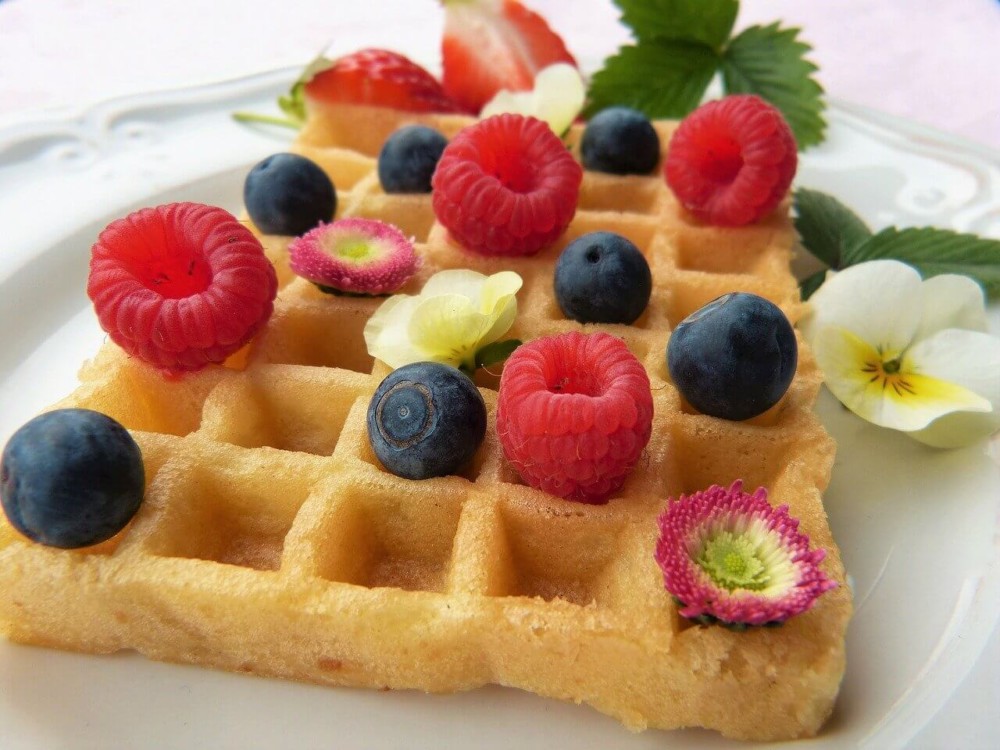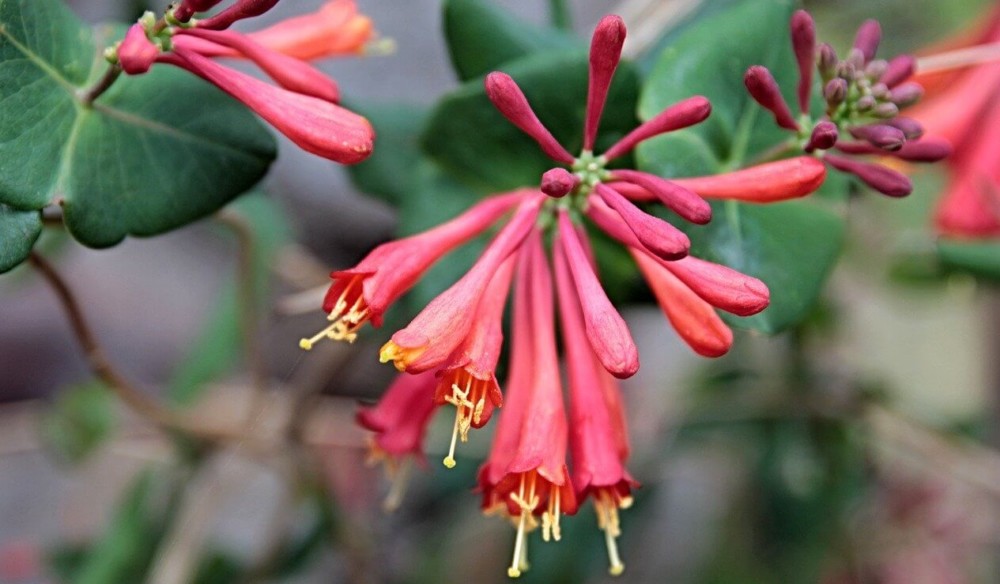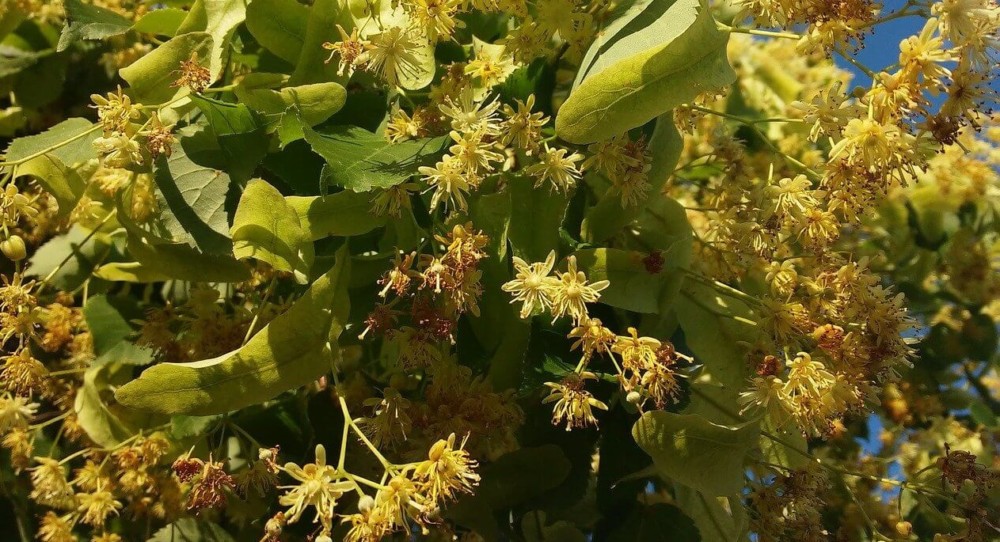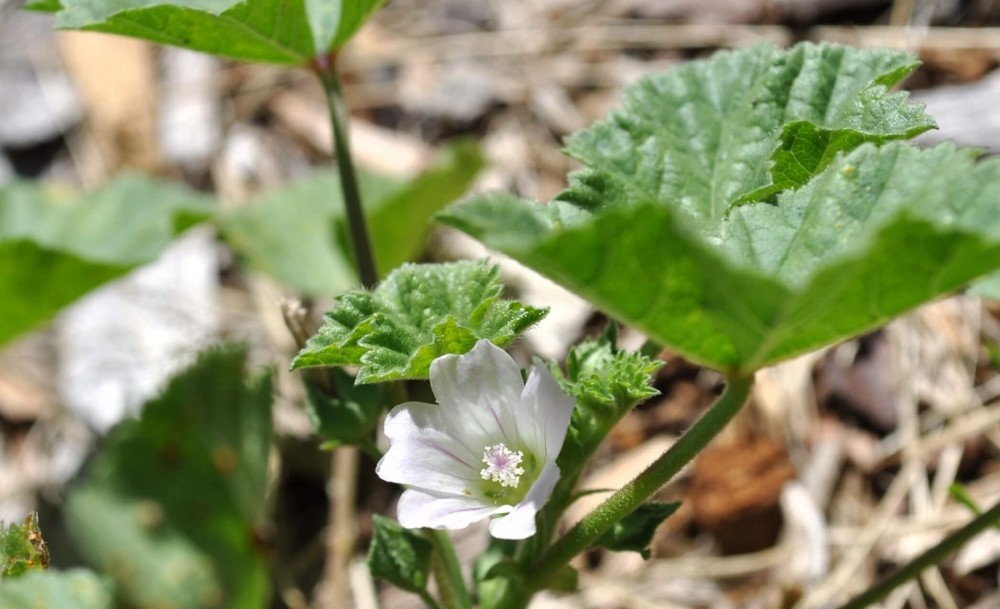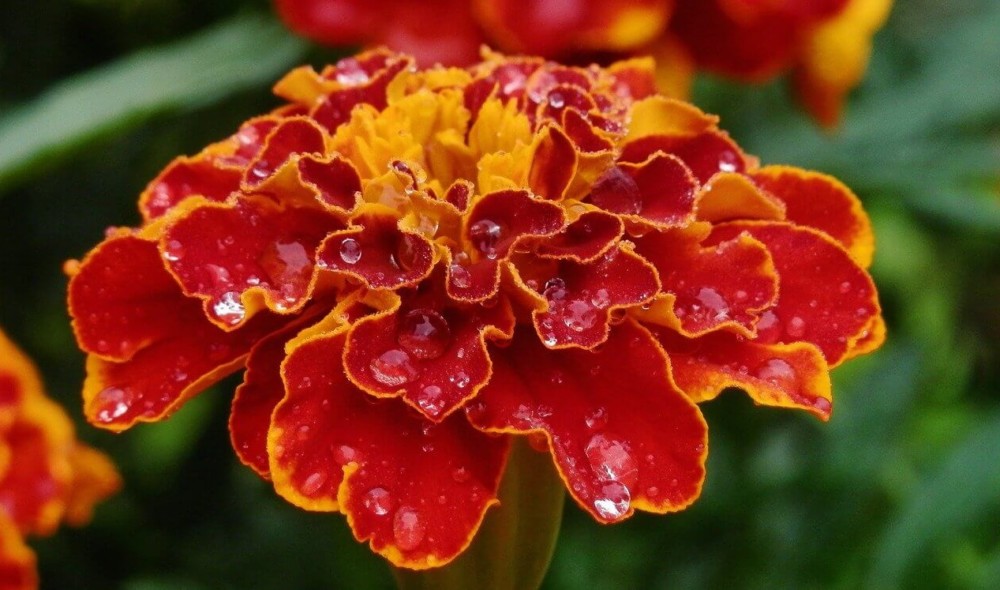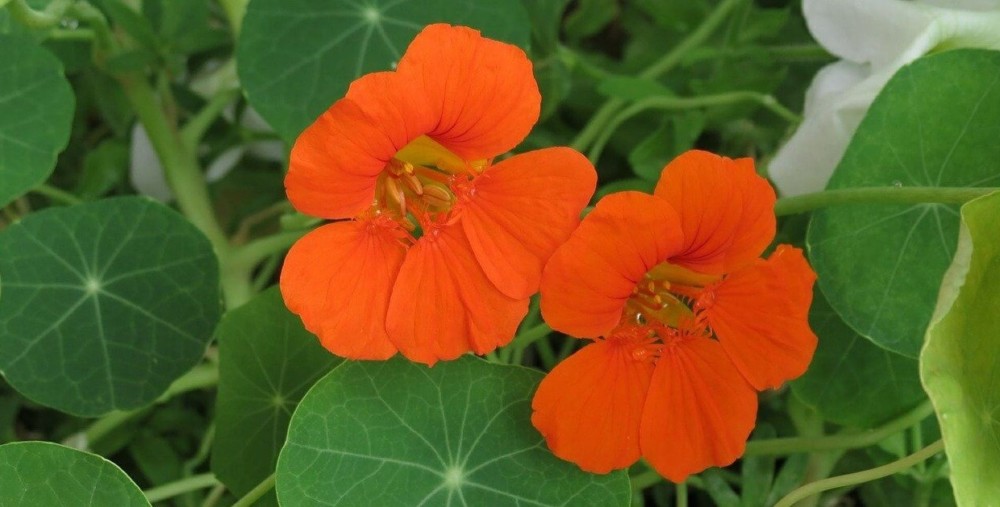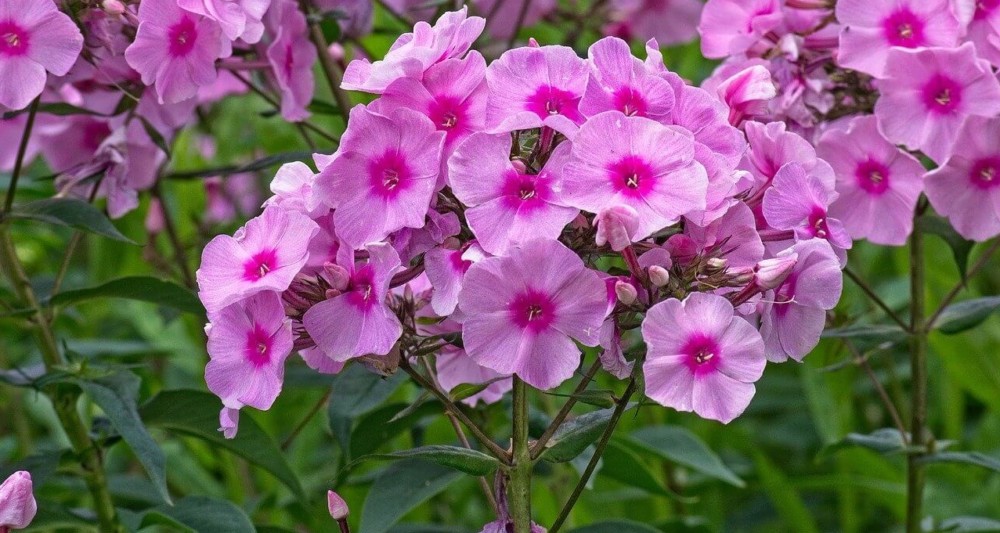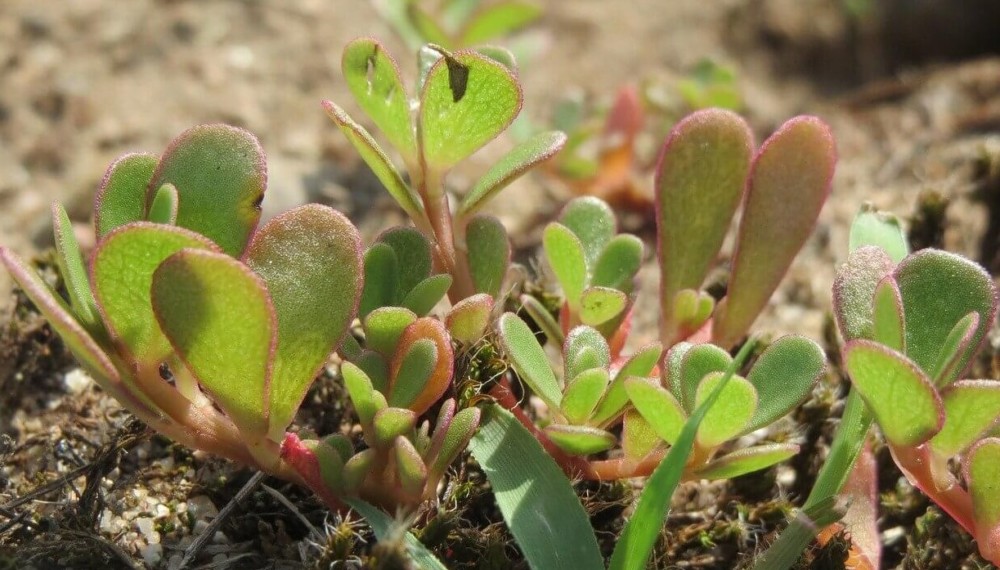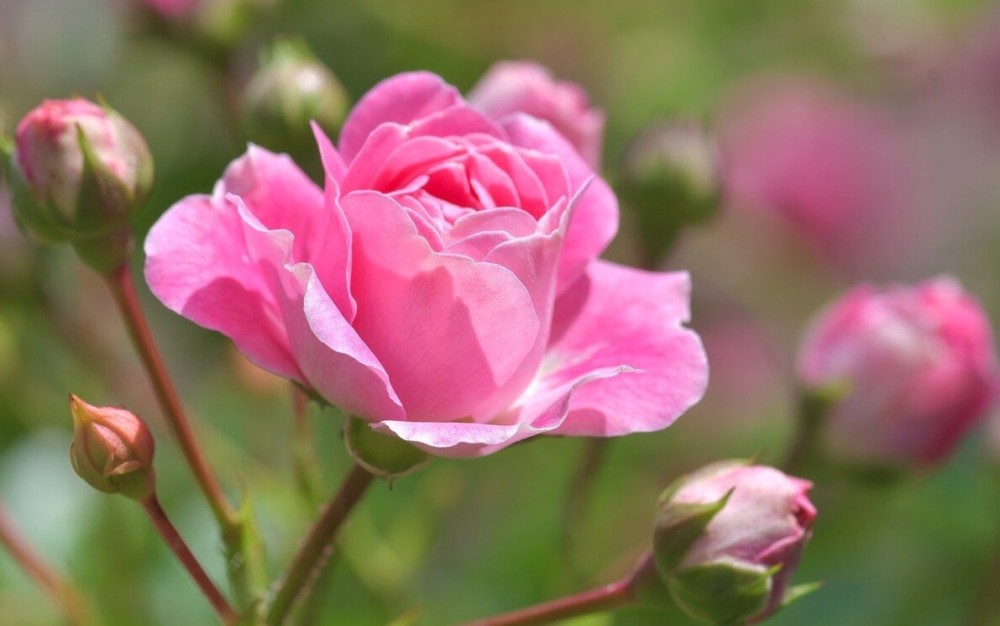If you missed part one of this article, you can find it here. This article covers 45 flowers that you can grow in a bee and butterfly garden that are also edible. What could be better than colorful, lovely flowers that help the ecosystem and can brighten up your dinners and desserts?
Fireweed
Firewood flowers and leaves are edible. Fireweed tastes moldy sweet and astringent. Young leaves are the most tender and can be eaten raw. Older leaves can be cooked to thicken stews
The light purple flowers start blooming at the bottom of the stalks and work their way up as the summer progresses. Fireweed likes cooler areas so it doesn’t flower in the heat of the summer, but is abundant in the Northwestern US, Canada, and Alaska.
Medicinally, it has been used to treat burns. It’s also eaten for gut health and helps with intestinal and digestion. It’s used for lung health and sore throats.
Fireweed is high in vitamins A and C.
- Made into jelly and preserves
- Fireweed tea is popular in the North
- Use in salads
- Add to chilis and stews
- Young shoots can be a substitute for asparagus
- Inside of the roots can be roasted and eaten
Fireweed is used as a long-term remedy to balance out many bodily functions and imbalances.
Buy Alaskan Fireweed seeds on Amazon here.
Forget Me Nots
Forget-me-nots with their pretty little blue flowers are edible. But, there are a few look-alikes that are considered mildly toxic. The forget-me-nots that grow in the USA, zones 5-9, are the variety M. sylvatica.
The Chinese forget-me-nots, Cynoglossum amabile, and broadleaf forget-me-nots, Myosotis latifolia are a little toxic to animals. Chinese forget-me-nots are not related to actual forget-me-nots and grow up to 2 feet tall.
These small 5 petal flowers are edible, but the rest of the plant may not be. The flowers come most often in blue, but can also be purple and occasionally white or red.
Forget-me-nots are used medicinally to help with lung issues and sometimes considered a kidney flower. Webmd states the entire plant can be eaten as an herb and will help with nosebleeds.
- Use to decorate cakes and cupcakes with the flowers
- Toss in a salad
- Garnish your dinner with them
- Add to jellies to infuse with color
- Use in homemade candies
- Use in cookies and other desserts
Forget-me-nots are a great addition to beautify a meal or dessert!
Buy Forget-me-not seeds on Amazon here
Honeysuckle
Honeysuckle is a very sweet flower that holds its nectar deep inside the flower. Kids love to suck the sweet liquid out as it tastes a lot like sugar water. Bees love it also!
Do not eat any other part of the honeysuckle except the flowers. Berries and leaves are poisonous.
Flowers are edible and most often used in desserts. Flowers are white or yellow. The berries of some varieties are not edible.
Used medicinally for inflammation.
- Sweet teas or lemonade
- Use in desserts, yogurts, and ice cream
- Add as a garnish to dishes
- Can be used as a sugar replacement in recipes
Honeysuckle is a delightful flower to eat and can substitute for candies and other high-sugar treats.
Buy Honeysuckle plant on Amazon here.
Hostas
Both the blossoms and leaves of Hostas are edible and have a mild asparagus flavor. Some people can also taste a hint of onion. Stalks and spring shoots are also edible.
The shoots are used as an asparagus substitute and taste very similar. They can be eaten raw or cooked.
Medicinally, hostas are said to help fight cancer. The roots are used in a poultice to treat mastitis. It has also been used externally to treat lumps and other skin ailments.
- Add to salads
- Fry into fritters
- Pickle shoots and flowers
- Steam leaves and add to main dishes, soups or stews
- Fry flowers in a little butter and eat as a side dish
- Add shoots and flowers to stirfries
- Leaves can substitute for spinach
Overeating hostas may result in side effects so it shouldn’t be eaten as a major food source. It also has few calories so it’s not great as survival food.
Check out this Hostas combo pack on Amazon
Johnny Jump Ups – Pansies – Violas
The entire johnny jump up flower is edible and the stamen and pistol will add increased flavor to any dish it’s used in. Also called pansies, johnny jump ups are related to violas. Pansies are larger, but look similar and can be used in the same way.
These flowers come in many color combinations and the entire part of the flower is edible. They pack a delicate flavor that is reminiscent of a mild wintergreen flavor. Other colors taste like mild spicy lettuce.
Pansies and violas grow in partial sun and cooler weather. They are an annual flower. Pluck wilted flowers to keep the plant flowering longer. If you want to grow seeds for next year, keep the wilted flowers on the plant that the seeds produce.
Medicinally, johnny jump ups are used in salves to treat sores and wounds. They are also used for sore throats, intestinal issues, high blood pressure, and hysteria.
- The entire flower is edible
- Add to cream cheese and spread on a cracker for a great snack
- Decorate cakes
- Add to cookies, truffles, and other desserts for a lovely look and added flavor
- Add to fruit salads
- Freeze in ice cubes for a decorative punch to drinks
- As a garnish
- Add to pancakes or crepes
Johnny-jump-ups and pansies are most often used in desserts and salads but can be added to other dishes for an added flavor. Test different varieties of pansies to decide which flavors you prefer.
Buy Johnny Jump Ups seeds on Amazon here.
Linden Flowers
Linden trees grow wild in much of the USA and the flowers are sweet like honey. When used in a tea, a sweetener isn’t needed. The flowers, leaves, and seeds are edible. Leaves taste a lot like lettuce.
In the MIddle East, linden flowers are used as a yeast starter in breads. The seed pods and flowers were also used as a chocolate substitute in Europe in years past.
Medicinally, the flowers are used in teas to treat anxiety and ADHD. Linden flower tea is used to treat coughs, sore throats, fevers, and colds. It also helps with insomnia.
- Make a syrup with the flowers
- Add to salads
- Use similar to steamed spinach
The most popular use for linden is in tea, but there are many other ways to eat it.
Buy a Linden tree seedling on Amazon here
Mallow – Marshmallow Plant
Before modern factories, mallow was used to make marshmallows. It’s also called cheeseweed or malvia. The flowers, leaves, and seed pods are all edible. They have a slight sweet tastes and
Many species of bees love mallow flowers.
Medicinally, mallow is used to heal sores and swellings. It’s used to treat the common cold and helps with sore throats. It’s high in vitamins A, B, and C. It also has potassium, calcium, and magnesium.
- Used in teas
- Eaten raw in salads
- Used to thicken soups
- Saute with veggies
- Fry the leaves to make chips
- Seed pods can be pickled as a caper substitute
Like many “weed plants” mallows provide food to bees and the seeds are loved by birds.
Buy nongmo mallow seeds on Amazon here.
Marigolds (Calendula)
Marigolds and Calendula are not botanically related, but they do look alike and both plants are edible. Calendula is called “pot marigold” and thus, the common mistake of thinking they are different varieties of the same plant.
Marigolds get their name because they were referred to as Mary’s Gold, referring to the Virgin Mary. The Aztecs used marigolds for medicinal purposes and the Greek’s flavored dishes with the flowers.
They have a great amount of carotene, which converts to vitamin A when we eat them.
Marigolds are an annual plant and blooms from summer into the fall. All marigold flowers are edible, but they do pack various flavors. The most commonly enjoyed varieties include the French marigold, Gem marigold, and Mexican mint marigold. T. tenuifolia, grown in the U.S., has a citrus or lemony flavor.
The leaves are also edible and taste milder than the flowers. Marigold has a slightly peppery flavor with a hint of spice. Some varieties have a stronger spice flavor.
- The entire flower and leaves can be eaten
- Freeze petals in ice cubes for a festive look
- Brew into a colorful tea that is used to alleviate cramps and help with fevers and sore throats
- Substitute for saffron in dishes
- Use in broths and soups
- Add to salads and sandwiches
- Great in stir fry
- As coloring in fresh cheese or butter
In addition to the edible qualities of marigolds, they also pack a powerful punch in the garden. Marigolds help to keep away rabbits and other pest insects. They attract bees and other helpful pollinators, and they add a colorful vibrancy to your garden.
Buy a mix of Calendula seeds on Amazon here.
Nasturtiums
All parts of the nasturtium plant are edible. You can eat the seed pods, flowers, and leaves. Nasturtiums have a peppery taste and have been described as tasting similarly to watercress.
The flowers are bright and colorful. They come in orange, red, scarlet, white, cream, pink, salmon, yellow, gold and many other shades in between. Chefs love nasturtiums because they can spice up a plate with color and flavor.
Nasturtiums are often thought of as an annual because they die in colder weather, but in the southern parts of the U.S. and warmer areas, they are perennial and grow very prolifically. Some people even think of them as a weed!
Nasturtiums pack a powerful punch of vitamins A, C, and D. They have 10 times more vitamin C than lettuce!
Use the new, green leaves, but don’t harvest all the leaves as the plant needs them to grow. Fresh seedpods and flowers should be harvested in the cool of the day as the flavor becomes more pronounced in the heat. The harvested parts of the nasturtiums can be kept in the refrigerator for 2-3 days.
The entire flower can be eaten.
Use nasturtiums in a variety of ways including:
- Seeds, the whole flower, and leaves are edible
- Pickled seed pods can substitute for capers on pizza
- Flowers can be eaten in salads or on sandwiches
- Use the leaves and flowers in dressings for added flavor
- Use in flavored oils, or with fresh cheese as an added herb
- Add to pasta, omelets, soups, and rice dishes
- Pickled flower buds
- Substitute leaves for onions
- Use as a garnish
- Tea made from the leaves is often used to prevent colds
- Stuff leaves like you would grape leaves
- Add to fresh butter or vinegar
- Roast dried seeds and grind to replace pepper
However you use them, you are sure to enjoy nasturtiums and their added punch of flavor!
Buy Nasturtium seeds on Amazon here.
Phlox and Dames Rocket
Although Phlox and Dames Rocket are different plants, they are often confused with each other. Fortunately, both flowers are edible. Phlox has five petals and Dames Rocket has four. Dames Rocket is also called Sweet Rocket or Dame’s Violet.
Both plants boast petals that are deep lavender, although pink and white variations also exist. Flowers and leaves are edible, but the leaves are generally too strong to be palatable. Flowers and young leaves have a milder flavor. Leaves should be picked before the plant blooms. Seeds are also edible and can be sprouted and eaten.
- A great addition to fruit salads
- Garnishes
- Great with chicken
- Add to biscuits, cookies, and muffins
Only the perennial phlox is edible. Don’t eat the annual variety. Phlox has a mild spicy flavor.
Buy Phlox seeds on Amazon here.
Purslane
Although it’s often considered a garden weed, purslane is a bee favorite and is growing in popularity as an edible flower. Both the leaves and the yellow flowers are edible. Purslane will bloom all year round in mild climates and all summer in colder climates.
One of the highest plants in Omega-3 fat content
- Add to salads and sandwiches
- Steam and add to other vegetables
- Great in soups
Purslane is a unique plant and looks cactus-like with its fat leaves, but has a lot of great nutritional content.
Buy Purslane seeds on Amazon here.
Roses
Roses are very strongly scented but have a much more mild fruity flavor when eaten. They are used in teas and aromatherapy. Both the flower and rose hips (seed pods) are edible.
The flowers are usually separated from the rest of the flower and eaten. Harvest flowers in the early morning when it’s still cool and the petals will have more moisture and be better to eat.
Roses are used as an anti-inflammatory. They are a mild laxative and help to lower cholesterol. They are also consumed as a heart tonic. They are high in vitamins A and C.
- Use in teas for added flavor and color
- Add to salads
- Decorate cakes
- Use in jams and preserves
- Great in desserts and fruit salads
Single flowered roses are best for bees, but both the full blooms and single flower varieties are great for eating!
Check out this deep purple rose on Amazon
Squash Blossoms
Did you know that all squash flowers are edible, even zucchini! They offer a mildly sweet flavor and are great stuffed with cheese and herbs. Most squash plants are very prolific so you can eat the blossoms and still enjoy plenty of squash to harvest.
If you want a full harvest, then eat only the male blossoms, which are located around the outside of the plant. Male blossoms are also missing the round bulb under the flower.
- Stuff with breadcrumbs or ricotta cheese
- Fry or saute
- Add to a Mediterranian pizza
- Coated in batter and deep-fried
- Add to salads
- Use as a garnish
Squash blossoms make a great substitute for stuffed grape leaves and work very well in any Mediterranean dish.
Buy heirloom nongmo zucchini seeds on Amazon here.
Sunflowers
Blossoms taste of mild asparagus raw or cooked. It’s also edible as a bud and will taste a lot like artichokes. The leaves are also edible. Of course, the seeds are edible also.
Sunflowers are used to treat high fevers. Poultices are used to treat sores and snake and spider bites. Sunflower tea is used to treat malaria.
Sunflower is high in vitamin E.
- Thinly slice sunflower buds, roast and add to pizza
- Steam buds like artichokes
- Toss into salads
- Sunflower tea
- Petals should be eaten raw to preserve the flavor
- Add to stir-fries and soups
The uses of sunflower are limitless. From roasting the buds to adding it to soups, pasta, and main dishes, sunflowers add a great nutty flavor to any dish.
Check out these nongmo sunflower variety seeds on Amazon
20+ Lesser-Known Edible Flowers that Bees Love:
There are several flower types that are edible, but either doesn’t have a lot of flavor or are rarely used because they haven’t grown in popularity. Here are a few bee-loving edible flowers you may not realize you can eat!
- Anise Hyssop (Agastache): known as licorice mint. Leaves and flowers are edible.
- Angelica: Used to decorate cakes. Stems and flowers are edible.
- Baby’s Breath (wild): Also known as Sweet Woodruff. The flowers are sweet with a hint of vanilla or a nutty flavor.
- Camellia: Used in Asian cuisine and as a garnish
- Chives: The flowers carry a mild onion flavor
- Cornflower: Blue petals are used in decoration, in main dishes, or to treat constipation, fever, and congestion.
- Elderflower: The small white blossoms are sweet and popular for cakes and savory dishes.
- English Daisy: Mildly bitter and used more as a garnish or decoration in foods
- Forsythia: A non-native flower with little flavor, it is edible and enjoyed by bees in the spring.
- Fuchsia: flowers are slightly acidic. Berries are edible. Used as a garnish and in cold soups.
- Gladiolas: Mild in taste and similar to lettuce. Often eaten stuffed.
- Garden Sorrel: Eat before the plant goes to seed. Tangy, tart and lemon tasting. Use like a lemon in salads, on pizza, or in sauces
- Hollyhock: Petals have little flavor, but add beauty to any dish
- Lilac: Mix with cream cheese and use it as a spread. Add to desserts, jellies or sorbets.
- Peonies: Petals are used in salads
- Primrose: Roots, flowers, and leaves are edible. Roast seeds, toss flowers into salads and eat roots raw.
- Radish Flowers: The yellow spicy flowers are similar to the veggie it produces.
- Queen Anne’s Lace: Flowers have a mild carrot flavor and are great in salads and stews. Do not eat a look-alike flower with hairless stems as it’s poisonous.
- Safflower: Fast becoming a favorite, especially the roasted root. Used as a saffron replacement. Petals are also edible and can be used in salads, soups, and main dishes.
- Sorrel: Flowers and leaves carry a lemon flavor and can be used in salads, soups or as a lemon replacement.
- Strawberry Blooms: Sweet and delicate. The only negative is that it means fewer strawberries.
Conclusion
The number of edible flowers is much longer than this list, but I’ve tried to include flowers that are beneficial to bees and hummingbirds. These flowers will provide vibrant color to your food and fun flavors while also helping your local bee populations.
Related Articles
You might also enjoy these bee and flower-related articles.
Grow Allergy Free Flowers That Also Help Bees (With Photos)

